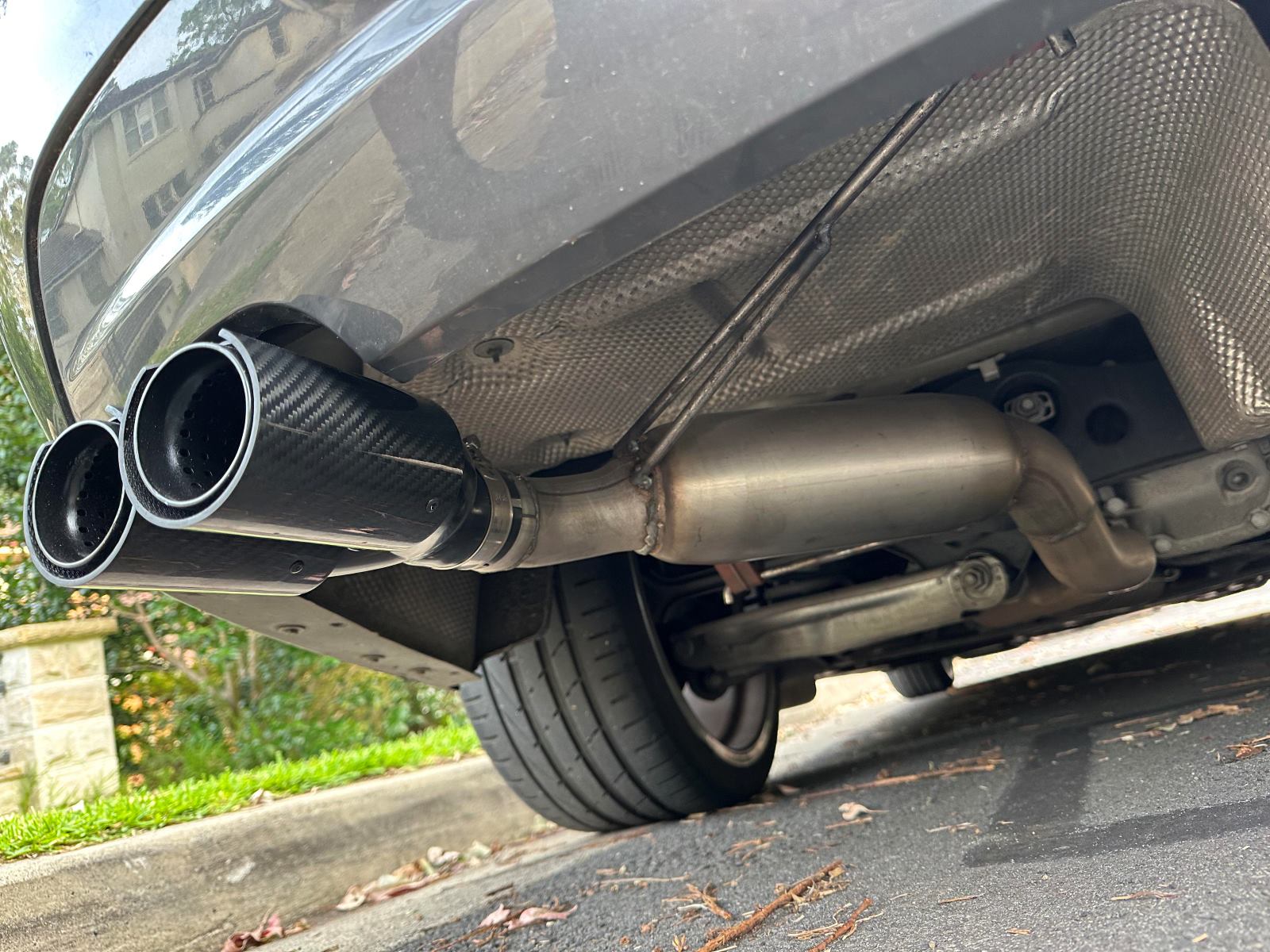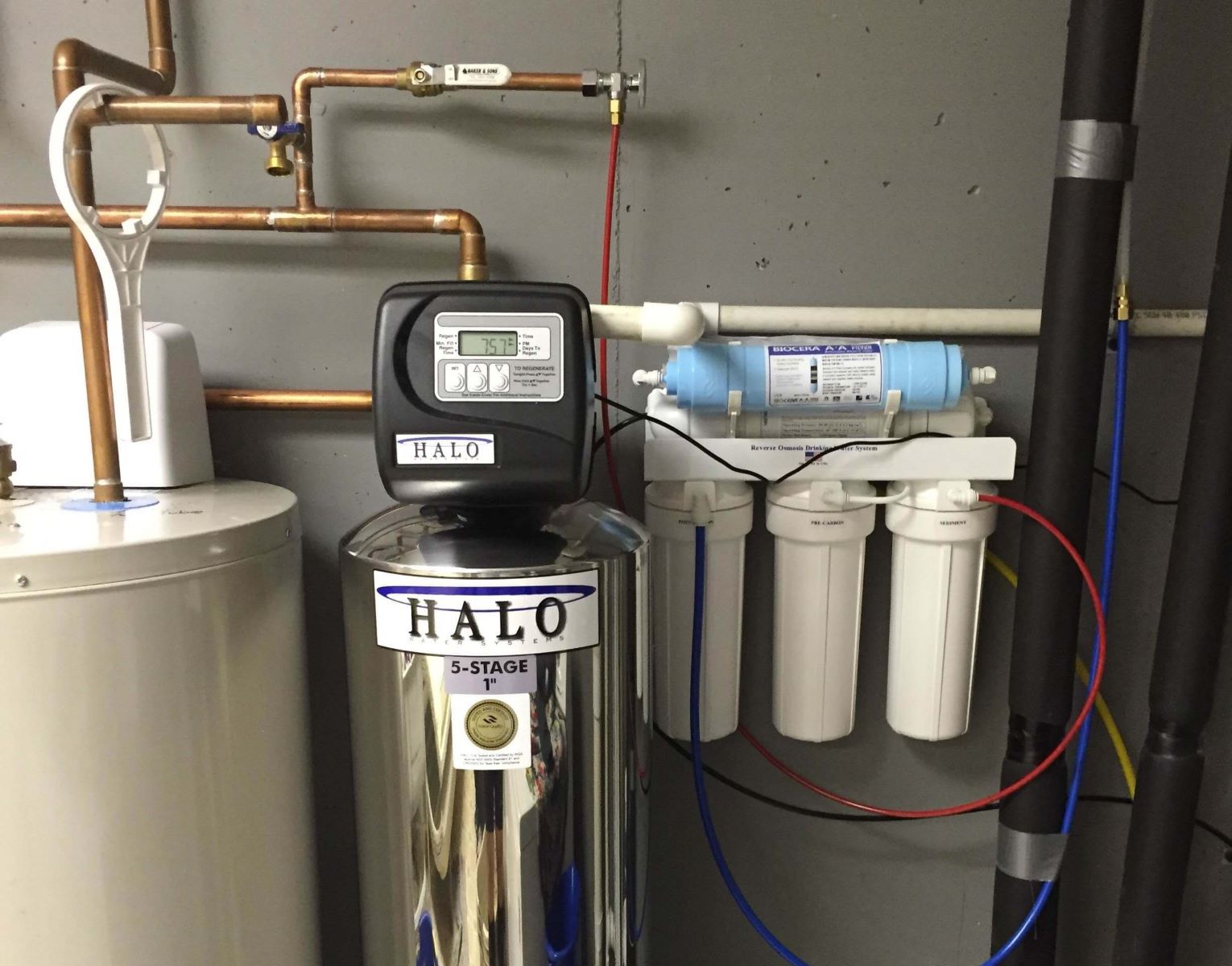Home>Automotive>The Surprising Role Of A Resonator In Your Exhaust System!


Automotive
The Surprising Role Of A Resonator In Your Exhaust System!
Published: January 16, 2024
Discover the crucial function of a resonator in your automotive exhaust system and how it impacts performance and sound. Learn more about automotive resonators now!
(Many of the links in this article redirect to a specific reviewed product. Your purchase of these products through affiliate links helps to generate commission for Regretless.com, at no extra cost. Learn more)
Table of Contents
Introduction
When you think about your car’s exhaust system, the first components that come to mind might be the muffler, catalytic converter, and exhaust pipes. However, there’s another crucial player in this system that often goes unnoticed—the resonator. This unassuming component plays a surprisingly significant role in the functioning of your vehicle, influencing both its performance and sound.
The resonator, often overshadowed by its more renowned counterparts, quietly contributes to the overall efficiency and acoustics of the exhaust system. While its name might suggest a simple function related to sound, the resonator’s role extends beyond just modifying the exhaust note. Its strategic placement and design serve a specific purpose, impacting various aspects of your car’s performance and driving experience.
In this article, we’ll delve into the world of automotive exhaust systems to uncover the mysteries of the resonator. From understanding its basic function to exploring the different types available, we’ll shed light on the surprising significance of this often overlooked component. So, buckle up and prepare to be amazed by the unexpected impact of the humble resonator in your car’s exhaust system.
What is a Resonator?
A resonator, in the context of an automotive exhaust system, is a specialized component designed to alter the sound and characteristics of the exhaust gases as they flow through the system. It is typically a cylindrical or rectangular chamber made of stainless steel, aluminum, or other durable materials, strategically placed along the exhaust pipe. The resonator is equipped with perforated tubes and sound-deadening materials, such as fiberglass or steel wool, to achieve its intended effects.
The primary function of the resonator is to reduce or modify the sound produced by the engine as the exhaust gases pass through the system. It achieves this by creating acoustic waves that interact with the sound waves generated by the engine, effectively canceling out certain frequencies and reducing the overall noise level. This process is based on the principle of acoustic resonance, where the resonator is tuned to target specific frequencies associated with exhaust noise, resulting in a more pleasant and refined sound output.
In addition to its role in sound modification, the resonator also serves to fine-tune the backpressure within the exhaust system. By strategically placing the resonator along the exhaust pipe, engineers can manipulate the flow dynamics of the exhaust gases, optimizing the overall performance of the system. This contributes to a balanced backpressure, which is crucial for maintaining engine efficiency and ensuring proper emission control.
Furthermore, the resonator plays a part in minimizing exhaust drone, which refers to the low-frequency resonance often associated with certain engine speeds or loads. This unwanted drone can create an unpleasant driving experience, and the resonator helps mitigate this issue by effectively managing the exhaust sound waves.
In essence, the resonator acts as a sophisticated acoustic tuning device within the exhaust system, utilizing its design and placement to influence the sound characteristics and flow dynamics of the exhaust gases. Its multifaceted role goes beyond mere sound suppression, encompassing the optimization of engine performance and the enhancement of driving comfort.
The Function of a Resonator in the Exhaust System
The resonator, often underestimated in its significance, fulfills several crucial functions within the automotive exhaust system. Its primary role revolves around the manipulation of sound waves and exhaust gas dynamics, contributing to both the auditory experience and the overall performance of the vehicle.
Sound Modification
One of the key functions of the resonator is to alter the sound produced by the engine as the exhaust gases travel through the system. By leveraging the principles of acoustic resonance, the resonator is designed to target and neutralize specific frequencies associated with exhaust noise. This results in a more refined and pleasing exhaust note, enhancing the overall driving experience. The resonator's ability to mitigate harsh or undesirable sound frequencies plays a pivotal role in creating a more enjoyable auditory environment for both the driver and passengers.
Backpressure Optimization
In addition to its impact on sound, the resonator also contributes to the management of backpressure within the exhaust system. By strategically positioning the resonator along the exhaust pipe, engineers can fine-tune the flow dynamics of the exhaust gases. This manipulation of backpressure is essential for maintaining an optimal balance that supports engine efficiency and emission control. The resonator's role in regulating backpressure helps ensure that the engine operates within the desired performance parameters, ultimately influencing fuel efficiency and overall power delivery.
Exhaust Drone Mitigation
Another significant function of the resonator is the mitigation of exhaust drone, which refers to the low-frequency resonance that can occur under specific driving conditions. This unwanted drone can create a discomforting experience for the driver and passengers. The resonator's design and placement allow it to effectively manage the exhaust sound waves, minimizing the occurrence of exhaust drone and promoting a smoother, more refined driving experience.
In summary, the resonator's multifaceted functions encompass sound modification, backpressure optimization, and exhaust drone mitigation. Its strategic integration within the exhaust system highlights its pivotal role in enhancing both the auditory ambiance and the overall performance of the vehicle.
Benefits of a Resonator
The inclusion of a resonator in an automotive exhaust system yields a range of notable benefits that significantly contribute to the overall driving experience and the vehicle's performance. Understanding these advantages sheds light on the pivotal role of the resonator in enhancing both auditory and functional aspects of the exhaust system.
1. Enhanced Sound Quality
One of the primary benefits of a resonator is its ability to refine the sound produced by the engine. By targeting and neutralizing specific frequencies associated with exhaust noise, the resonator contributes to a more pleasant and refined exhaust note. This results in a more enjoyable auditory experience for both the driver and passengers, creating a harmonious blend of engine sound that complements the driving ambiance.
2. Improved Driving Comfort
The mitigation of exhaust drone, facilitated by the resonator, leads to an overall enhancement in driving comfort. By effectively managing the low-frequency resonance that can occur under certain driving conditions, the resonator minimizes the occurrence of unpleasant exhaust drone. This promotes a smoother and more refined driving experience, reducing potential discomfort for the driver and passengers.
3. Optimization of Engine Performance
Through its role in regulating backpressure within the exhaust system, the resonator contributes to the optimization of engine performance. By fine-tuning the flow dynamics of the exhaust gases, the resonator helps maintain a balanced backpressure that supports engine efficiency and emission control. This, in turn, influences fuel efficiency and power delivery, ultimately contributing to an enhanced driving performance.
4. Emission Control
The inclusion of a resonator in the exhaust system aids in emission control by contributing to the overall efficiency of the system. By optimizing backpressure and exhaust flow dynamics, the resonator assists in ensuring that the engine operates within the desired parameters, thereby promoting cleaner emissions and environmental responsibility.
5. Reduction of Exhaust Noise
In addition to refining the exhaust note, the resonator also plays a role in reducing overall exhaust noise. By effectively managing sound waves and frequencies, the resonator contributes to a quieter exhaust system, promoting a more peaceful driving environment and minimizing noise pollution.
In essence, the benefits of a resonator extend beyond mere sound modification, encompassing improvements in driving comfort, engine performance, emission control, and noise reduction. Its inclusion in the exhaust system reflects its significant impact on enhancing various aspects of the driving experience, ultimately contributing to a more enjoyable and efficient vehicle operation.
Types of Resonators
When it comes to resonators used in automotive exhaust systems, several distinct types exist, each with its own design and functionality. Understanding the variations among these resonators provides valuable insight into their diverse applications and the specific benefits they offer. Here are the primary types of resonators commonly found in exhaust systems:
1. Expansion Chamber Resonator
The expansion chamber resonator, also known as a helmholtz resonator, features a design that includes a cavity or chamber with a specific volume and a narrow neck or opening. This configuration allows the resonator to target and neutralize specific frequencies of exhaust noise, resulting in a refined and harmonious exhaust note. The expansion chamber resonator is effective in minimizing unwanted sound frequencies, contributing to a more pleasant auditory experience for both the driver and passengers.
2. Perforated Tube Resonator
Perforated tube resonators, as the name suggests, consist of a tube with strategically placed perforations, often accompanied by sound-deadening materials. This type of resonator leverages the perforations to manipulate the exhaust sound waves, effectively reducing noise levels and refining the overall exhaust note. The inclusion of sound-deadening materials further enhances its ability to modify exhaust sound, contributing to a more enjoyable driving ambiance.
3. Multiple Baffle Resonator
The multiple baffle resonator incorporates a series of internal baffles or chambers within its structure. These baffles are designed to create acoustic interference and resonance, effectively targeting specific exhaust frequencies for modification. By utilizing multiple baffles, this type of resonator achieves comprehensive sound manipulation, resulting in a refined and balanced exhaust note. The intricate internal configuration of the multiple baffle resonator enables it to effectively manage exhaust noise and optimize the auditory experience.
4. Helical Resonator
Helical resonators feature a spiral or helical design, which facilitates the manipulation of exhaust sound waves through their unique internal geometry. This type of resonator utilizes the helical configuration to induce acoustic resonance and interference, effectively modifying the exhaust note and reducing unwanted noise frequencies. The helical resonator's innovative design allows for precise sound tuning, contributing to a more refined and harmonious auditory environment within the vehicle.
5. Combination Resonator
Combination resonators integrate multiple resonator designs within a single unit, offering a comprehensive approach to sound modification and exhaust management. By combining different resonator technologies, such as expansion chambers, perforated tubes, and baffles, these resonators provide a versatile solution for achieving refined exhaust notes and minimizing exhaust noise. The combination resonator's ability to leverage various design elements results in a holistic approach to sound tuning, enhancing the overall driving experience.
In summary, the diverse types of resonators available for automotive exhaust systems encompass a range of designs and functionalities, each contributing to the refinement of exhaust sound and the optimization of driving comfort. Understanding the distinct characteristics of these resonator types provides valuable insight into their specific applications and the benefits they offer in enhancing the auditory ambiance and overall performance of the vehicle.
Conclusion
In conclusion, the often underestimated resonator plays a pivotal role in shaping the auditory ambiance and optimizing the performance of automotive exhaust systems. From its ability to refine exhaust notes and mitigate unwanted sound frequencies to its contribution to backpressure management and driving comfort, the resonator's multifaceted functions underscore its significance in enhancing the overall driving experience.
The inclusion of a resonator yields a myriad of benefits, ranging from the creation of a more refined and harmonious exhaust sound to the promotion of a quieter and more comfortable driving environment. By leveraging acoustic resonance and strategic design elements, resonators effectively modify exhaust sound waves, contributing to a more enjoyable auditory experience for both drivers and passengers. Furthermore, their role in optimizing backpressure and mitigating exhaust drone enhances engine performance and driving comfort, ultimately influencing the overall efficiency and enjoyment of vehicle operation.
The diverse types of resonators available, including expansion chamber resonators, perforated tube resonators, multiple baffle resonators, helical resonators, and combination resonators, offer versatile solutions for achieving refined exhaust notes and managing exhaust noise. Understanding the unique characteristics and functionalities of these resonator types provides valuable insight into their specific applications and the benefits they offer in enhancing the auditory ambiance and overall performance of vehicles.
In essence, the resonator, often overshadowed by its more renowned counterparts, stands as a silent yet influential force within the realm of automotive exhaust systems. Its ability to harmonize the symphony of engine sounds, optimize exhaust dynamics, and promote a more refined driving experience highlights its unexpected significance. As automotive engineering continues to evolve, the role of the resonator in shaping the auditory and functional aspects of vehicles remains a testament to its enduring impact on the driving experience.











